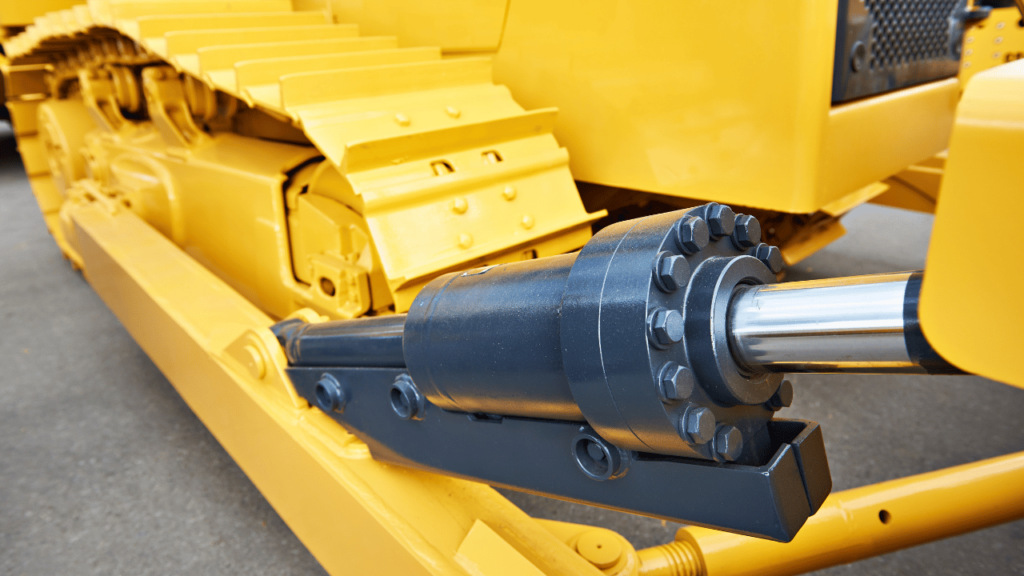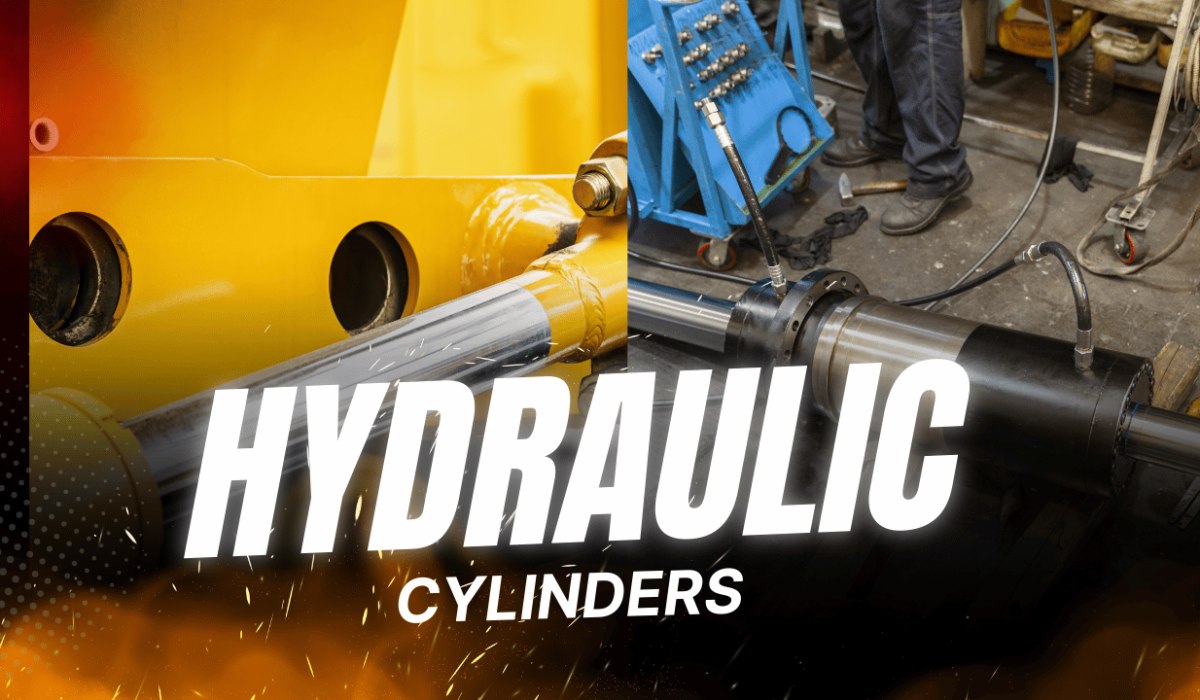Hydraulic cylinders are essential in construction gear, delivering the substantial mechanical power required for the effective operation of heavy equipment. These components in hydraulic systems convert the energy of pressurized hydraulic fluid into regulated linear motion. This powers the fundamental functions of diverse construction machinery—the lifting, pushing, and excavating that accomplish the task.
How Hydraulics Created the Modern World
Ever wonder how humanity progressed from hand tools to tall buildings? The key is the hydraulic power! You might be surprised to learn that the first clumsy, steam-powered excavator laid the seeds of modern technology long ago in 1882.
Indeed, the idea received validation, despite its imperfections. Then, in 1897, the first all-hydraulic excavator transformed buildings—smoother movement and less operator muscular strength needed.
But the true explosion occurred in the 1960s when hydraulics began to replace cables on building machinery ranging from backhoes to dozers. This gave us the ability and accuracy to completely change the earth.
Modern hydraulic technology is what enables such apparently unachievable building schedules to become reality.
Understanding Hydraulic Cylinders
The framework of this revolution is hydraulic cylinders. Fundamentally, the piston rod is the essential for transforming hydraulic power into the practical job of lifting, pushing, and excavating.

Carefully built with many key components—the piston rod, the cylinder barrel housing the piston, and hydraulic cylinder seals preventing leaks and maintaining pressurized fluid where it belongs—these cylinders are
Anyone using heavy machinery—especially in the construction sector—must first understand what a hydraulic cylinder is.
Types of Hydraulic Cylinders Used in Construction
The harsh surroundings of construction sites necessitate that the machinery be similarly durable. Hydraulic cylinders, the powerhouses behind the movement of heavy equipment, come in many specific forms to satisfy the different demands of the sector.
Here’s a look at some of the most common:
- Welded body cylinders: Perfect for the rough and tumble of building work, its characteristic is a welded body and end caps, which makes them immensely sturdy and durable.
- Tie rod hydraulic cylinders: These cylinders are held together by external tie rods. Their simplicity of design provides the benefit of less maintenance and makes them fit for lighter-duty uses.
- Double-acting hydraulic cylinders: These flexible cylinders apply force both extending and retracting. Their two-way power makes them ideal for machinery such as loaders and excavators where control and accuracy are absolutely vital.
- Are you looking for telescopic hydraulic cylinders with a long reach? The solution is telescopic cylinders. Ideal for dump trucks, cranes, and even rescue equipment, they stretch far more than conventional cylinders thanks to several stacked stages.
Carefully matched to particular criteria—load capacity, environmental resilience, and space constraints—the correct hydraulic cylinder guarantees best performance in a variety of building projects.
Hydraulics: The Power Behind Modern Construction
The powerhouse underlying most modern construction equipment is hydraulic systems. They improve the capacity and safety of these equipment by means of benefits in power, accuracy, and durability.
Let’s look at some specific examples:
- Excavators: An excavator’s functioning revolves mostly on hydraulics. From foundation construction to landscaping, cylinders precisely dig and handle materials to regulate the boom, bucket, and cab rotation.
- Cranes: From lift to swing, hydraulics allow the regulated movement required to securely move large objects.
- Backhoes are versatile devices used for digging, lifting, and moving material. The front loader and backhoe arm are powered by hydraulic cylinders.
- Bulldozers: Even in cases when dealing with a lot of soil, sand, and trash, hydraulic cylinders provide exact control over the angle and depth of the blade, therefore enabling effective land clearing and grading.
- Dump trucks: The important chore of tilting the dump bed is handled by telescopic hydraulic cylinders, therefore enabling rapid and regulated dumping.
- Skid steer loaders: Skid steers are more flexible for digging, lifting, and material handling as they run a broad spectrum of attachments using hydraulics.
The Advantages of Hydraulics
Including hydraulic systems into building machinery offers major advantages.
- Power: Hydraulics produces great power, making it possible to handle even large weights with ease.
- Precision: For jobs where precision is paramount, these technologies provide fine-grained control.
- Durability: Designed to resist demanding building conditions, hydraulic components help to save downtime and maintenance costs.
Extending the Life of Your Hydraulic Cylinders: Maintenance Best Practices
Although they constitute the backbone of construction equipment, hydraulic cylinders are not without problems that could compromise their lifetime or performance. One ongoing problem that could compromise effectiveness and potentially lead to equipment breakdown is fluid leaks. Additional typical difficulties include hydraulic fluid pollution, corrosion of exposed components, and seal and bearing wear and tear.
Dealing with these problems calls for proactive maintenance.
Here are key maintenance tips:
- Regular inspections:Examine visually for any evidence of wear, corrosion, damage, or leaks. Prevention of additional major failures depends on early issue identification.
- Seal replacement: Seals eventually naturally lose their strength. Replace them aggressively to stop leaks and keep the cylinder pressure-holding capacity.
- Fluid management: Maintaining the right level and cleanliness of your hydraulic fluid can help Following the manufacturer’s advised plan will help you to change the fluid and filters to avoid wear and damage connected to pollution.
- Rod and barrel care: Dirt and trash may scrape the piston rod and cylinder barrel, damage seals, and create leaks. Protect them here.
Following these maintenance guidelines will help to guarantee that your hydraulic cylinders remain providing dependable performance, therefore reducing expensive downtime and maintaining the seamless operation of your building projects.
Future Hydraulics: Precision, Efficiency, and Power
Though building needs are growing, hydraulics are changing to fit the challenge! Manufacturers are concentrating on ideas that save energy waste, increase equipment lifetime using environmentally friendly materials, and provide more power in smaller containers.
Modern control systems save time and gasoline by providing exactness. Integrated sensors and real-time monitoring also notify you to any issues before they create expensive downtime. Do you need to maneuver bulky items in confined spaces?
New small cylinders provide the necessary power without the weight. These developments are changing the building sector and enabling you to remain profitable and competitive.
Unassuming heroes of construction, hydraulic cylinders provide the force and accuracy needed for contemporary tasks. From its modest beginnings to today’s innovative uses, hydraulic cylinder design has driven ongoing improvement.
These developments offer enhanced efficiency, improved environmental sustainability, and increased technological innovation in building.
For those working in construction, knowing the most recent hydraulic developments is absolutely vital. Maximizing equipment performance, being competitive, and making wise future operational decisions depend on it.
This covers not just applying the greatest technology but also working with professionals for skilled repairs and maintenance.





